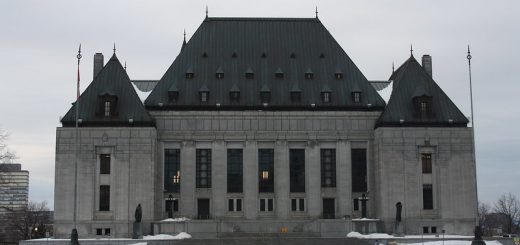Young v Bella: Protecting Children, Informants, and Suspected Abusers?
In Young v Bella, [2006] 1 SCR 108, the Supreme Court of Canada (“SCC”) was faced with the very difficult task of balancing the goal of protecting children with the interests of informants and persons under suspicion of child abuse. The case dealt with the duty of care between informants and those suspected of child abuse and the scope of protection provided by legislation that shields informants from liability for filing reports on suspected cases. Ultimately, the SCC upheld the jury’s finding that the defendants had breached a duty of care to the plaintiff, did not have “reasonable cause” for their suspicions, and could not rely upon the protection afforded by the statute.
Facts
One of the defendants, Leslie Bella, taught a social work class in which the plaintiff, Wanda Young, was enrolled. Through what the SCC characterized as a “bizarre misunderstanding”, Professor Bella mistook an appendix in a paper submitted by Young, which provided a first-hand account of a victim of sexual abuse repeating the cycle as an adult, for a confession by the plaintiff. Young had failed to provide a footnote reference to the textbook from which she had taken the account. Without asking Young about the source of the appendix, Bella took her concerns to William Rowe, the Director of the School of Social Work, who submitted a report to Child Protection Services (CPS), attaching the appendix without explaining its relevance to the student’s paper on sexual abuse.
More than two years passed before Young first learned of the suspicions of sexual abuse that had been raised against her. By this time, her name had been placed on the Child Abuse Registry, she had been discouraged from and given up her goal of being admitted into the social work program at the school, and her job prospects had been limited because of concerns by employers regarding these suspicions. When the CPS finally contacted her, Young cleared up the misunderstanding within a matter of days. However, the harm to her reputation and the difficulties she faced in obtaining jobs followed her even afterwards.
The SCC Decision
The SCC found that all of the elements of a negligence claim had been met. In particular, the defendants submitted that a duty of care should not be extended to the relationship between themselves and the plaintiff in the circumstances of reporting suspicions of child abuse because of policy reasons under the second branch of the Anns test; they argued that people should be encouraged to report their suspicions without fear of reprisal and that exposure to liability may have a chilling effect in deterring informants from making such reports. The Child Welfare League of Canada intervened on behalf of the defendants in supporting this position.
The SCC rejected this argument by noting that the claim of negligence was not simply based on the filing of the report but was grounded in the relationship between the professors and a student of the school, a situation which “created mutual rights and responsibilities.” The SCC refused to speculate on whether a duty would arise in circumstances outside of such a proximate relationship: “Whether or not a duty of care will be negatived where the parties are strangers linked only by the events surrounding a ‘report’ is a question that should only be decided when it arises.”
Analysis
Section 38 of the Child Welfare Act (now s. 15 of the Child, Youth, and Family Services Act, SNL 1998, c C-12.1) creates a statutory duty to immediately report suspicions of child abuse. This is coupled with protection from liability for informants “unless the making of the report is done maliciously or without reasonable cause.” There are similar provisions in provincial statutes throughout Canada (e.g., s. 72 of Ontario’s Child and Family Services Act, RSO 1990, c C.11). The defendants argued that, even if they owed a duty of care to the plaintiff, this provision barred any cause of action against them. This was a position that the Court of Appeal had accepted in overturning the jury’s verdict.
The underlying rationale for this provision is, of course, the same as the ones the defendants put forth as policy reasons in the duty of care analysis. Thus, the defendants had two kicks at the same rhetorical can. Here, the policy concerns of protecting children by encouraging people to report suspicions of abuse without fear of liability was used by the defendants to argue for a broad interpretation of the duty to report and the corresponding protection provided for fulfilling that duty. The SCC agreed to some extent with this argument:
Information that a child “may be” in danger or in need of protection suffices to trigger the obligation. Moreover, the obligation is to report “immediately.” This language suggests that there is no duty to investigate the information (where information exists) to ensure that it is accurate before reporting. The Act distinguishes between the stage of receiving information suggesting danger or need of protection, which is for the informant, and investigating the truthfulness of the information, which is for CPS. A broad duty to report information of possible abuse is consistent with the Act’s goal of protecting children.
However, the SCC noted that this goal must still be balanced with concern for “third parties who may be adversely affected by irresponsible reports.” This interest is protected by the clause in the Act which does not bar a cause of action against informants who make reports “maliciously or without reasonable cause.” While there were no assertions that the defendants had acted maliciously or in bad faith, the SCC held that they also did not have any reasonable cause for their suspicions about the plaintiff: “however it is viewed, the case study contained in Appendix A to the appellant’s paper was not information that a child was in danger or in need of protection from Wanda Young. So far as the respondents are concerned, its date and authorship were simply unknown (and not asked about).”
Interestingly, the SCC advised that informants, once in possession of relevant information, have no obligation to investigate its truth and must immediately report such suspicions to the authorities. But in this case, they held that this duty was not triggered because the information was so marginally relevant that it did not provide “reasonable cause.” For potential informants faced with a similar situation where they are in possession of marginal information that may require further investigation, their choices would be limited to conducting the investigation themselves or taking no further action altogether. Reporting such information without investigation may expose them to liability. Faced with such a choice, many informants may choose to do nothing.
While such information may not be sufficient to trigger a statutory duty to report, they may nonetheless be helpful in identify instances of child abuse upon further investigation. It is these cases that may fall through the cracks as a consequence of the SCC’s ruling. We cannot know for certain because there would be no way to count the number of children who are left unprotected as a result.
Conclusion
Given these circumstances, the better approach would be to encourage people to report all suspicions of child abuse, even those based on information that only provides marginal support, and give authorities the discretion to follow up or investigate further. While the harmful consequences for the plaintiff were particularly significant in this case due to her small community and the specific career path she wished to pursue, this may be minimized in most situations with tight guidelines on confidentiality and a more efficient review process. In my view, the real culprit in this case was the CPS, who took over two years to contact the plaintiff and clear up what turned out to be a simple misunderstanding.








Join the conversation